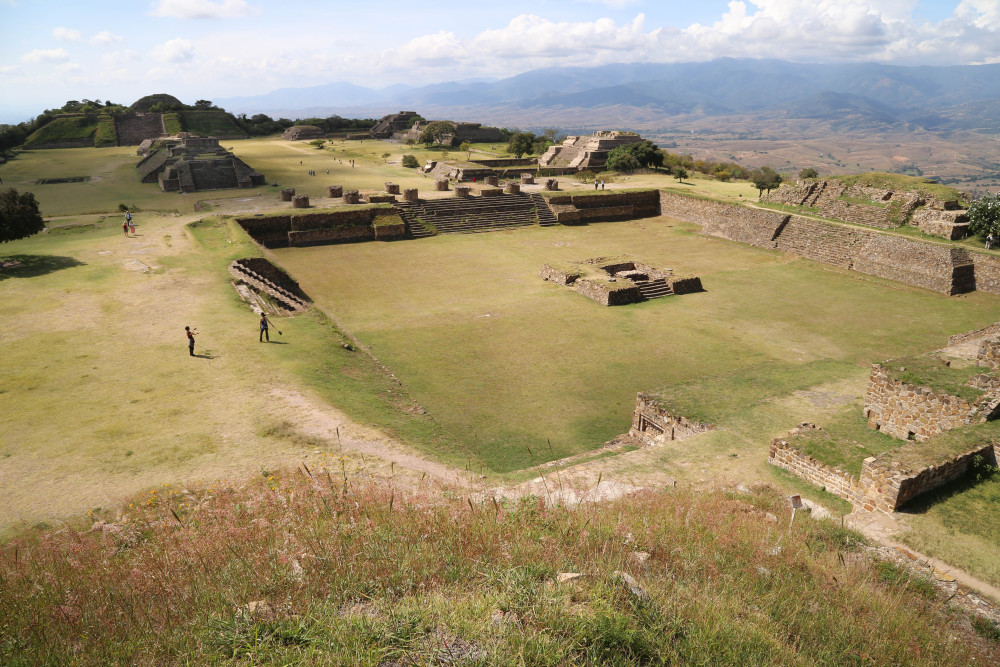Mexico has a long history and diverse population, stretching back thousands of years that include more than 60 indigenous cultures. One of the largest of those groups, Zapotecs, concentrated in the southern state of Oaxaca. The most famous remnant of their glory days – and surely the most breathtaking – is Monte Albán, a sprawling complex just a few miles outside the city of Oaxaca.
But Monte Albán is a mystery in a number of respects. Located 1,200 feet above the valley floor, it is a huge place, encompassing approximately 45 acres. At its height scientists estimate as many as 17,000 to 25,000 people inhabited the area. But the site has no rivers or discernable supplies of fresh water where the structures were built. In fact, some of the stones used to construct the buildings had to be hauled up from the valley by humans, since neither the wheel nor draft animals were available to the Zapotecs. It is surmised the site was chosen for defensive attributes (walls built for defense are along the north and west sides of Monte Albán).


